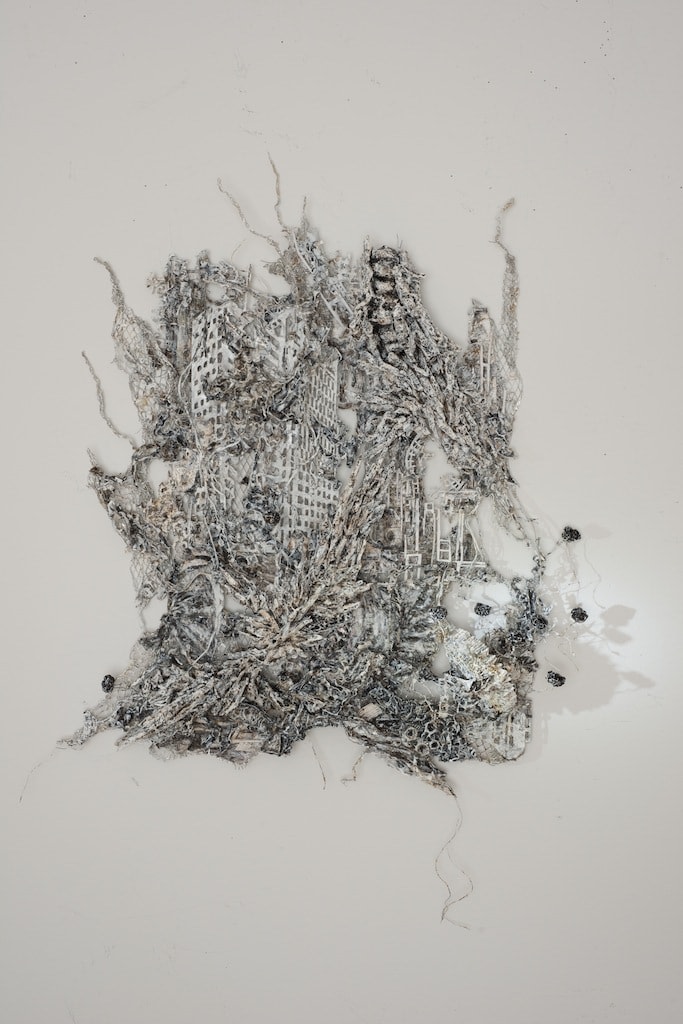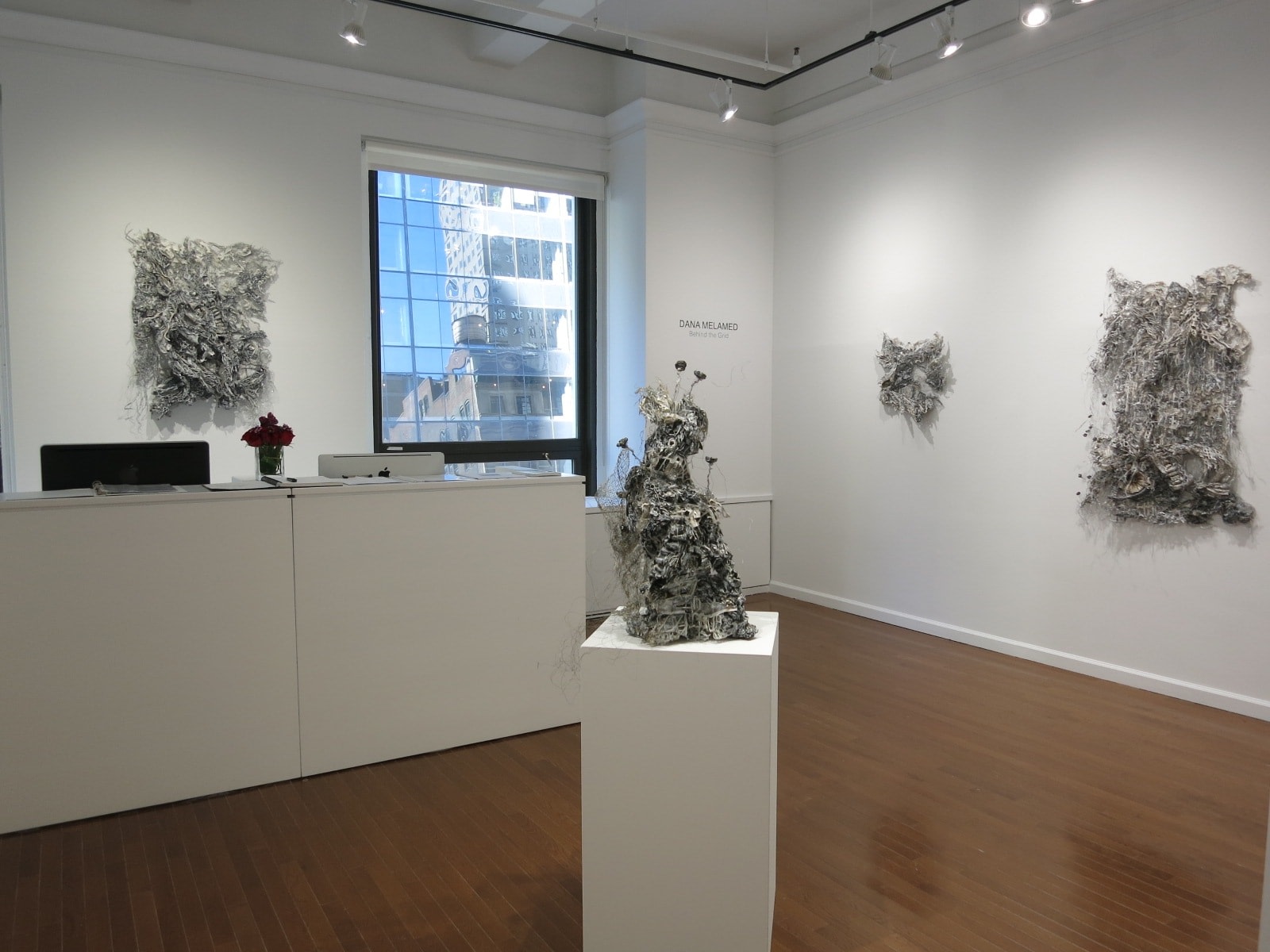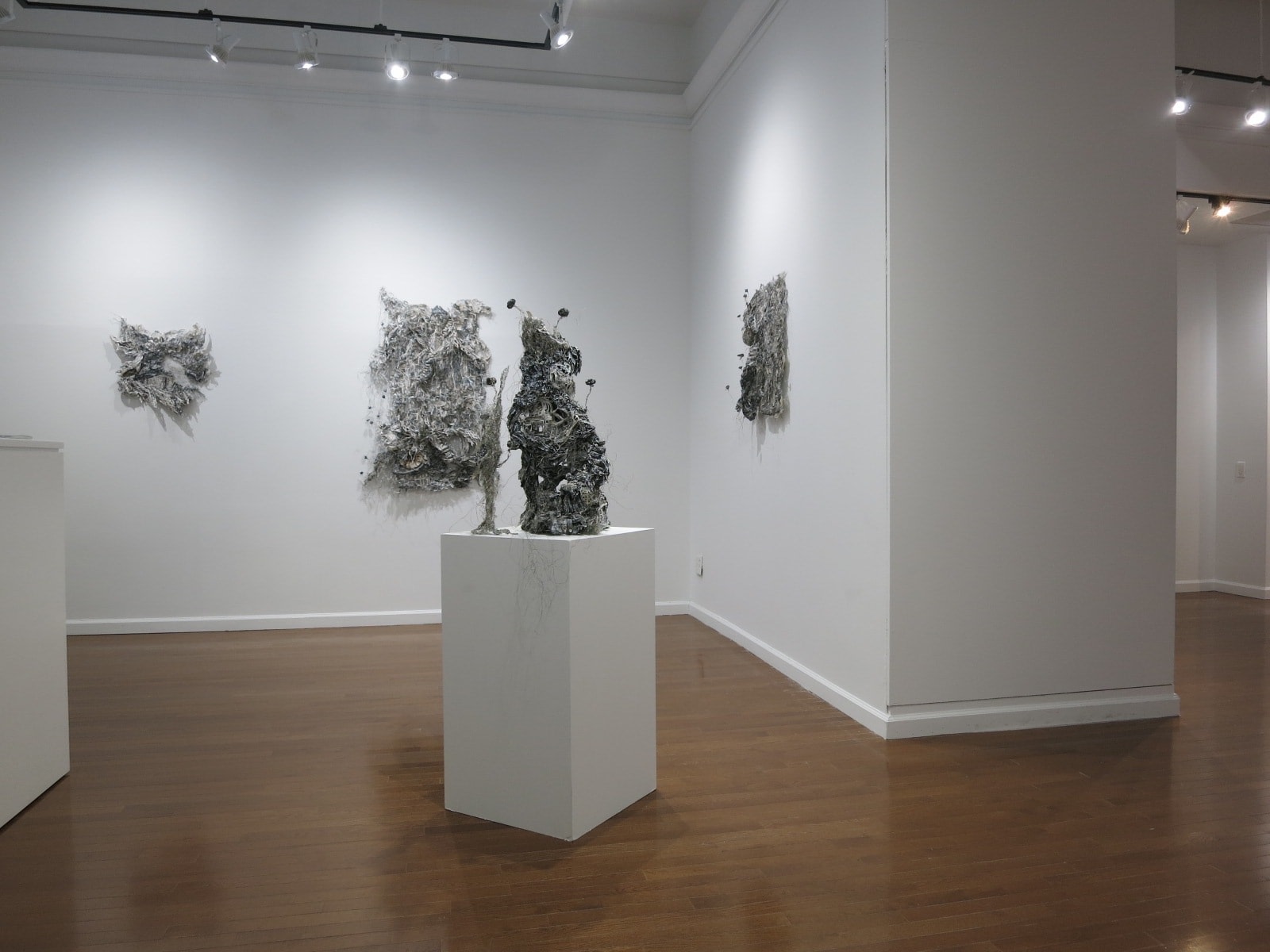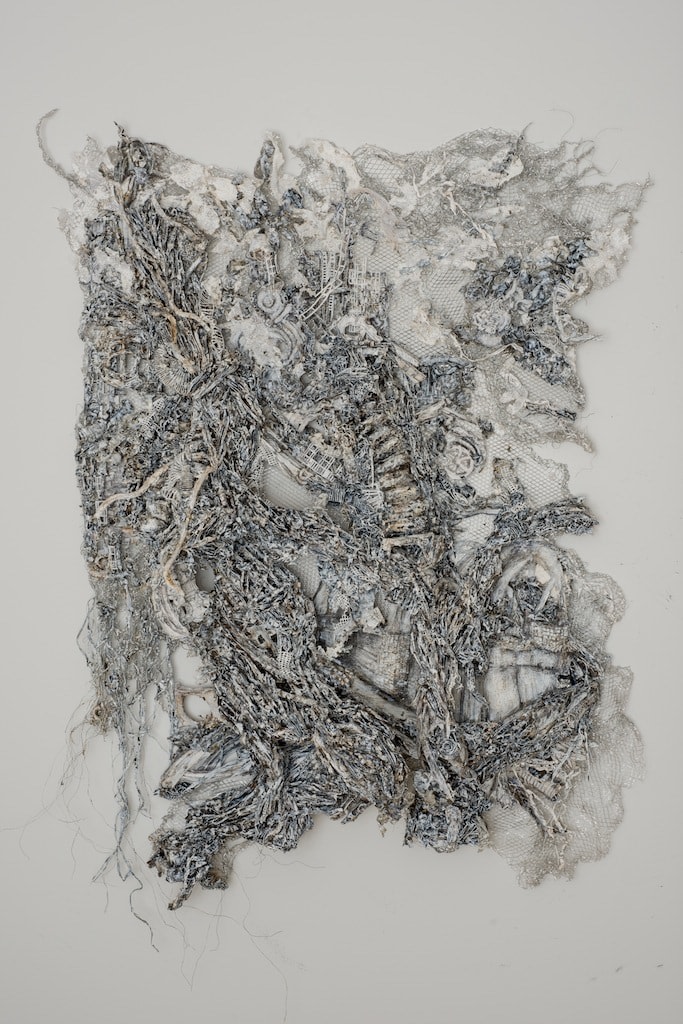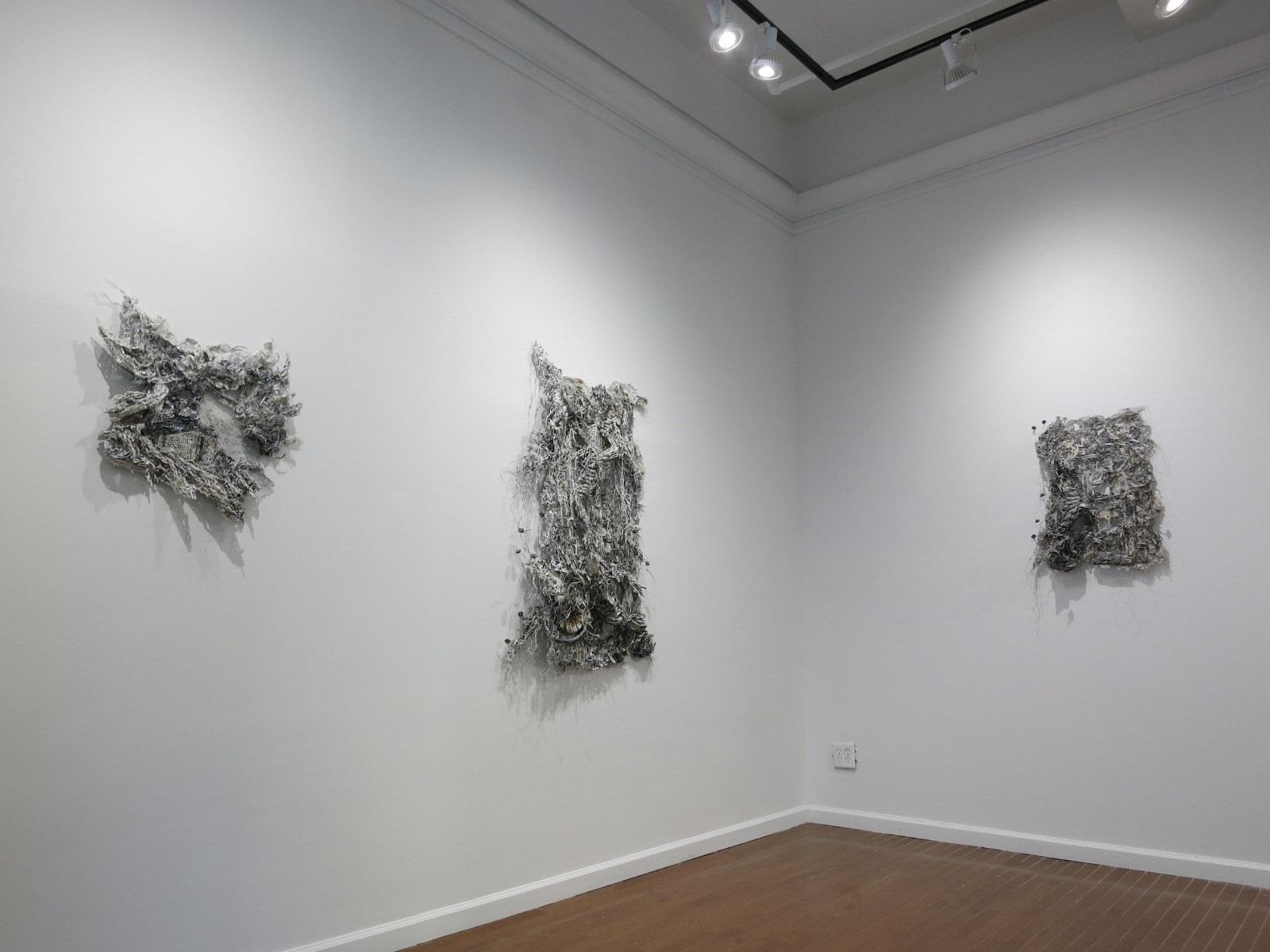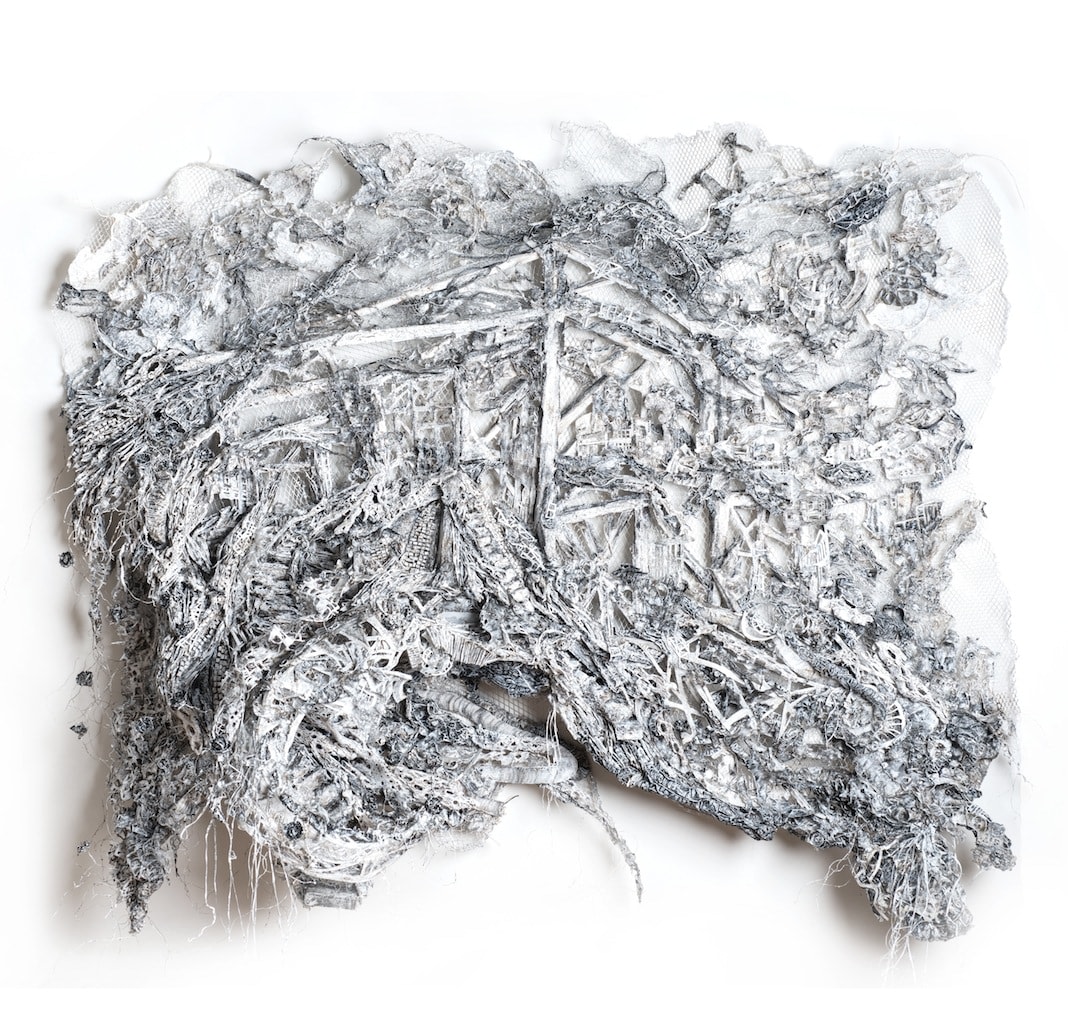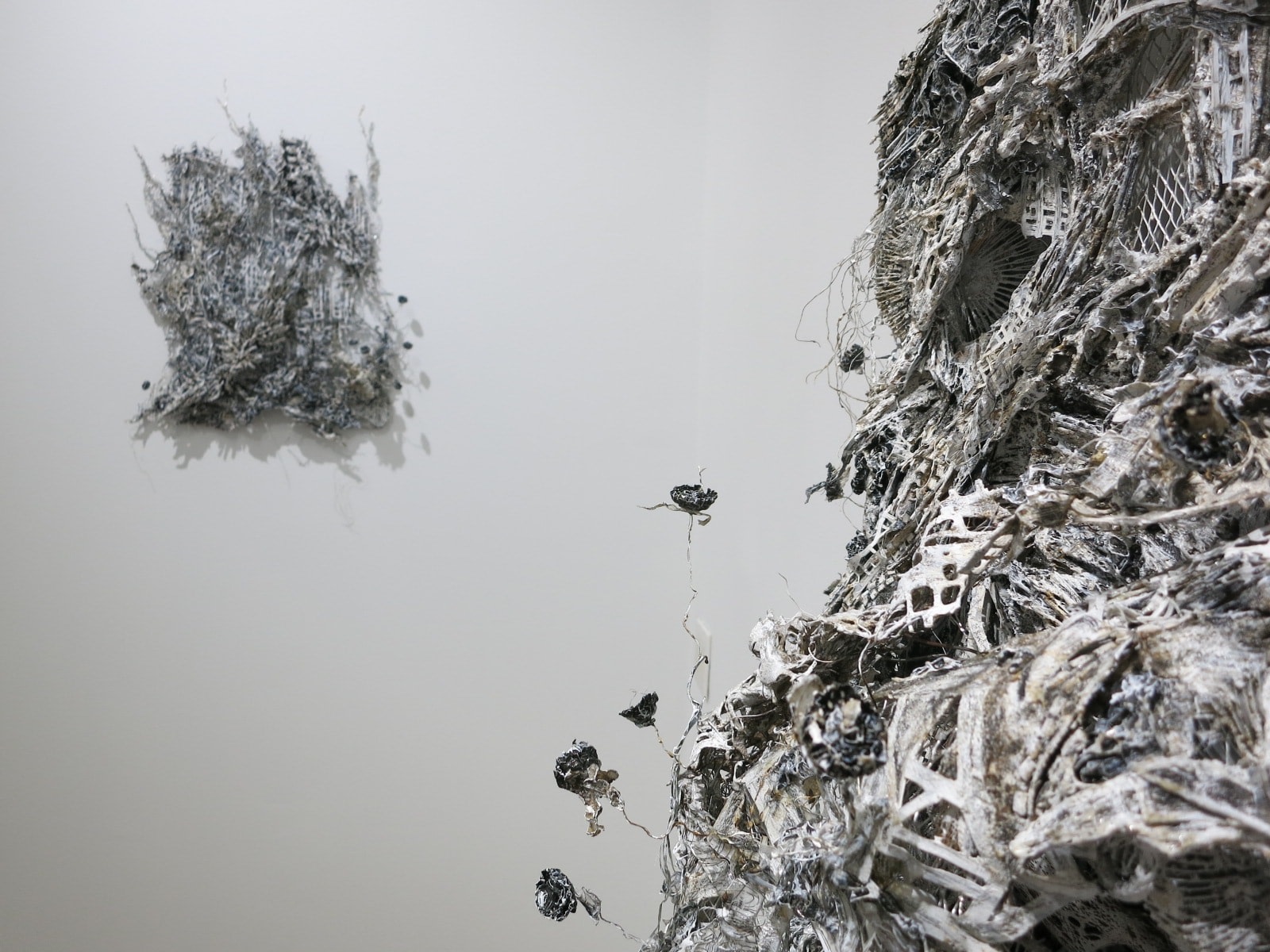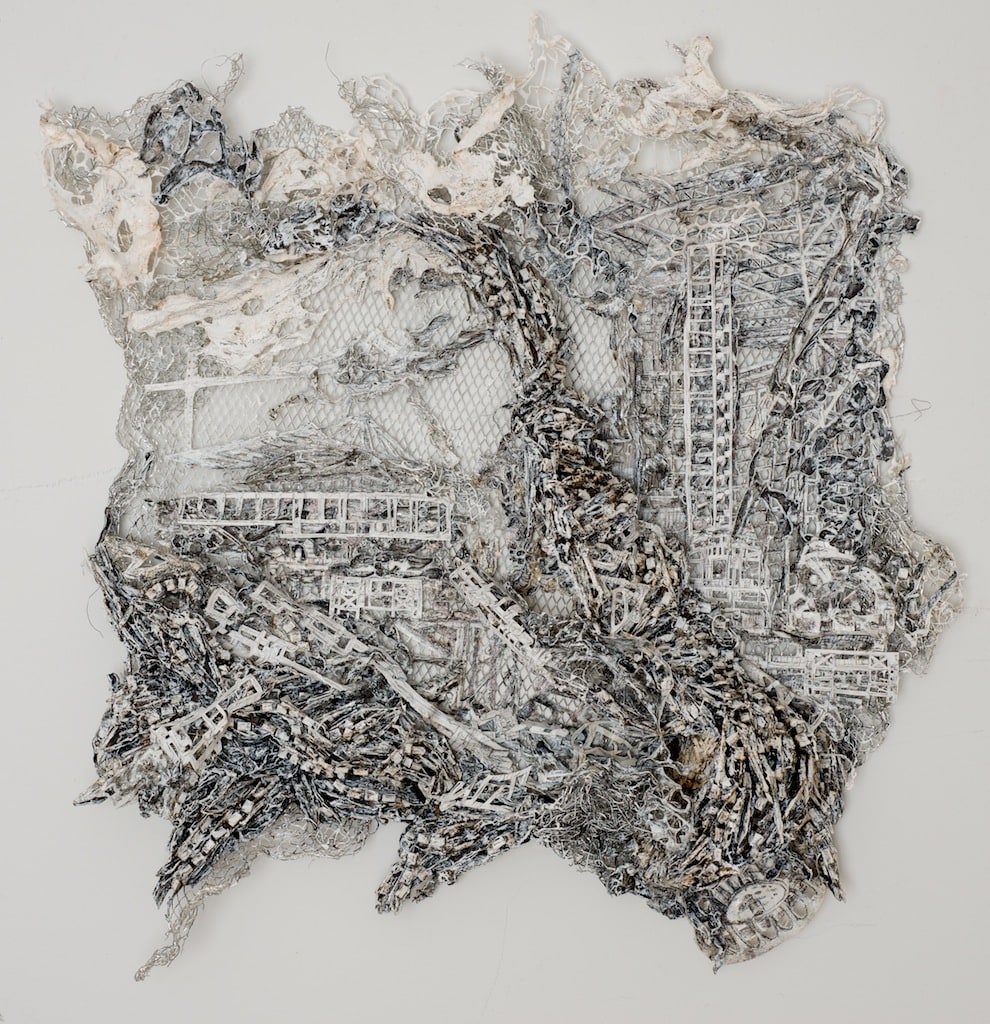Stux Gallery is pleased to present Behind the Grid, an exhibition of sculptures by New York based artist Dana Melamed. This marks the artistʼs first solo exhibition at Stux since joining in 2014, and is her eighth solo exhibition in New York. Behind the Grid will serve as the inaugural exhibit for Stuxʼs new location in midtown Manhattan at 24 West 57th Street.
Melamed's work is born equally through construction and destruction. Wearing a gas mask at work, she fuses together layers of transparency film, drawings, photographs and mesh with a burning torch; then, using a razor, she delicately feathers the welded object and grants it life and lightness. Her compilation of visual information distances the work from reality without losing reference to the present and past urban world. Though no color is deliberately applied, her methods of adherence bring brilliantly nuanced warm and cool hues to light, blossoming past the barbed surface like flower buds through concrete. Hope and devastation simultaneously arise from her works, as well as thoughts about the environment in which conflict amongst civilizations and industrial progress thrives together.
Industrial structures are scaled down and confined within the quasi-rectangular space, or faded away through a whirlwind of sharp mesh. Small, dilapidated water wheels and staircases escape the abyssal plain of the surrounding black and white tangles. The active landscapes are suspended in their unblinking moment, full of energy to grow into the new. Melamed evokes a future based on our destructive-constructive tendencies, and reflects upon the same aspect in history. It is a deceivingly child-like attitude towards modernity, created by presenting tame, storybook-like miniatures of the land to frolic through, while simultaneously enlarging her concepts to the terrifying scale of a new potential reality.
Landscape holds critical weight in art and art history, and Melamedʼs play on the architectural and social "grid" reinforces this notion. Melamed's rigid grids recede and erupt, and the romantic vision of a fictitious world is dissected and grotesquely reconfigured through the wreckage. Yet, beauty manages to grow around and through the ashes to continue anew. There is resonance of Anselm Kieferʼs postwar landscapes in their materialism and their emotion. The works signal an end as much as a beginning, the cycle of the departure of the familiar and the arrival of what is to become familiar. The eye is required to be held in balance and oscillation, continuously transforming the scene into something foreign, then familiar, then again foreign.

